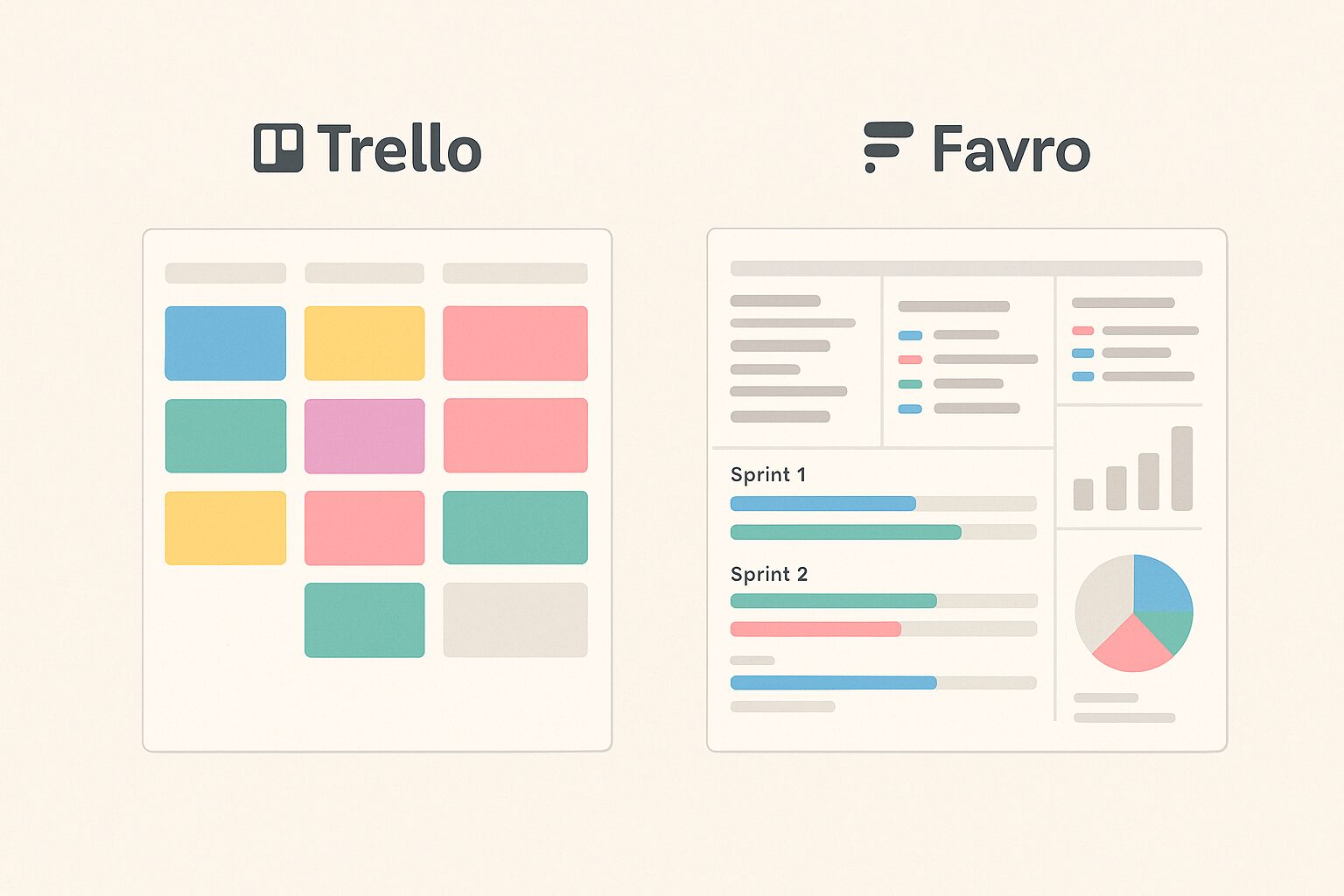Trello vs. Favro: The Ultimate Showdown
When it comes to project management tools, Trello and Favro are often at the forefront of discussions. Both platforms offer unique features that cater to different types of teams and projects.
Trello is widely known for its simplicity and ease of use. Its card-based interface allows users to drag and drop tasks across various boards, making it an excellent choice for visual thinkers. The straightforward Kanban approach is ideal for smaller teams or personal projects where flexibility is key. You can add due dates, checklists, and labels to your cards, which helps in maintaining organisation without feeling overwhelmed.
On the other hand, Favro takes it a step further with its combination of Kanban boards and agile project management features. It allows teams to manage not just tasks but also complex workflows and sprints, which can be particularly beneficial for software development teams. With built-in reporting tools and the ability to create custom views, Favro is often preferred by larger teams that require more advanced features.
Integrations and Customisation
Both Trello and Favro offer a range of integrations with other tools, which is a big plus in today’s interconnected digital landscape. Trello has a plethora of Power-Ups that allow you to connect with apps like Slack, Google Drive, and more. This means you can easily sync your work across various platforms, making collaboration smooth and efficient.
Favro, however, shines with its customisation options. You can create tailored workflows that fit your team’s specific needs. It also supports multiple methodologies, including Scrum and Kanban, allowing teams to adapt based on their project requirements. If you’re in search of a free alternative that also provides a robust project management system, OnlineTCards.com offers similar features to both Trello and Favro, including Kanban and Scrum boards without the hassle of cost.
User Experience: Which One Wins?
User experience is always a crucial factor when deciding on a project management tool. Trello’s minimalist design appeals to many users who appreciate a straightforward interface. New users can get started in minutes without extensive training or onboarding. The learning curve is almost non-existent.
Favro’s interface is slightly more complex due to its range of features, which might intimidate new users at first. However, once you get the hang of it, the flexibility and depth it offers can be a game changer for teams managing multiple projects simultaneously. The added functionalities may justify the initial learning period for many teams.
Ultimately, it boils down to your team’s size and requirements—Trello’s simplicity suits smaller projects, while Favro’s advanced capabilities cater to more extensive operations.
Pricing: Is It Worth It?
Pricing structures vary between Trello and Favro, which is another significant consideration. Trello offers a free tier that provides basic functionalities suitable for small teams or personal projects. However, if you want access to more advanced features, you’ll need to opt for one of their paid plans.
Favro also has a free tier but is generally regarded as more expensive than Trello as you scale up your usage. That being said, if your team requires robust reporting and custom workflows, the investment might be worthwhile. Plus, if you’re looking for an economical solution without compromising on features, OnlineTCards.com offers an entirely free project management system that includes Kanban boards and more.
